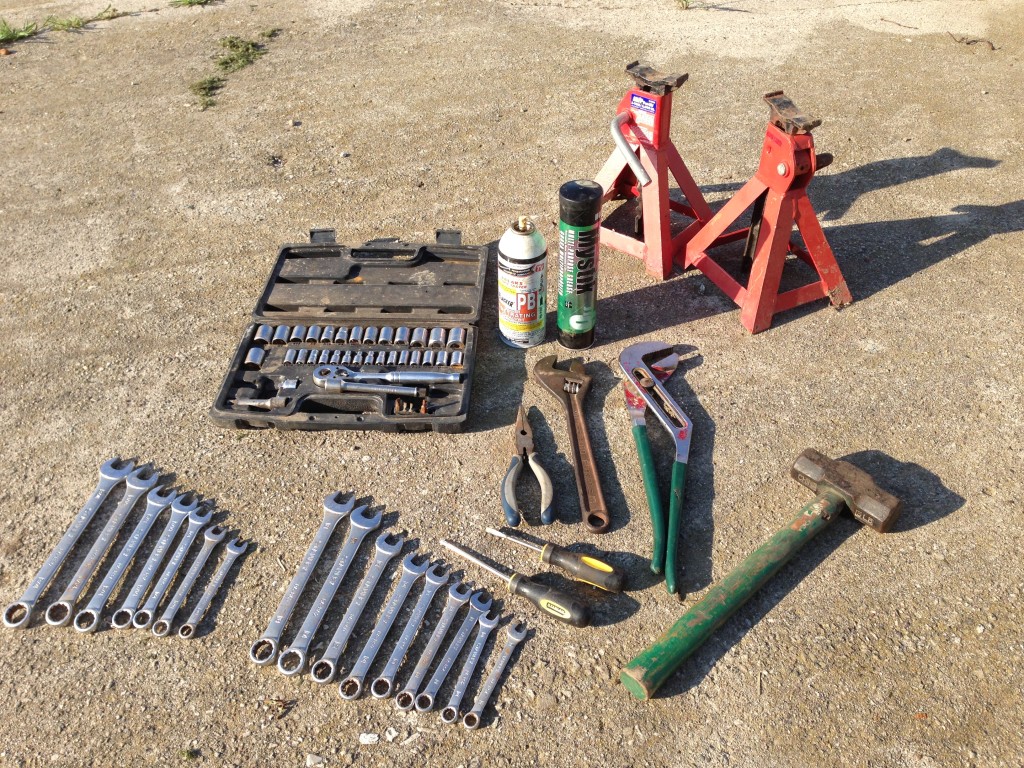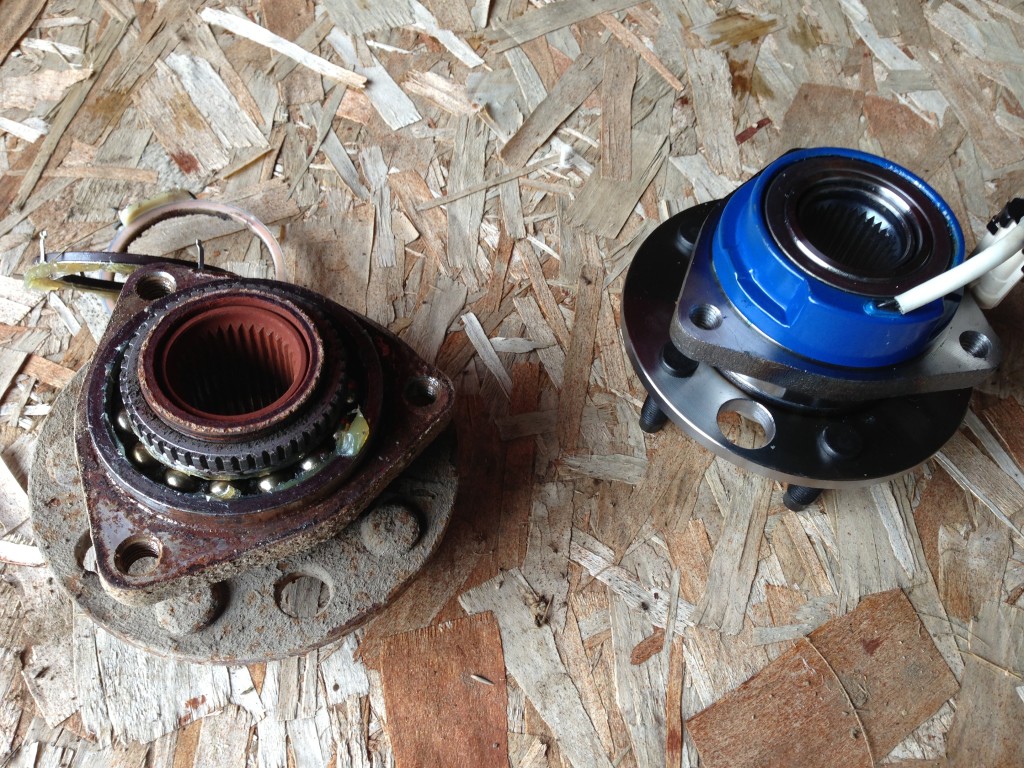Saving money is always a goal of modern homesteading families. One way we have saved a fortune over the years is by doing our own mechanical repairs when we can. Most modern homesteads use at least some kind of machinery or vehicles. Also, most homesteading families we know like to keep the same vehicles and machinery as long as they can. Most of the time when those vehicles or machinery break down, (and they WILL break down) the parts that break are high wear parts that are made to be easily fixed or replaced. There are exceptions, of course, to this rule.
This week we had the chance to do one of these repairs. A wheel bearing went out on a car we were borrowing from my parents. (Why are we borrowing a car? That’s a long, painful story.) A wheel bearing is not a complicated repair, but taking it somewhere can be very costly, time consuming and inconvenient. So, we did it ourselves, cutting the time the vehicle was out of service in half; not to mention greatly minimizing the expense.
Lots of things can go wrong with vehicles and equipment, but there are a few simple ways you can equip yourself to take care of most mechanical problems, and save yourself, time, money, and headache.
1: Diagnosis
The first thing you will need in order to tackle any repair work is a knowledge of the vehicle or machinery in question. Whenever you have a piece of equipment or a vehicle, you ought to know how it sounds, looks, feels when it is operating correctly. The first time you hear a sound or feel a vibration that isn’t normal, that is the first indication that something may be wrong. Now you will need to diagnose the problem.
To quickly deduce where the problem is coming from can take experience. If you don’t have experience, that’s okay, because you can learn just about anything you need to learn by doing a quick search on the internet. Just try googling things like:
“funny grinding sound when I turn left”
It is amazing how well this works. Generally, no matter how obscure the search, there is something out there on a forum or blog, or other website to help you.
2: Tools
Once you have figured out what the problem is, you will need to fix it. If it is a part that needs replaced, and you have found the replacement at an auto parts store, or a tractor part store, or wherever your part is sold, you will need to begin to disassemble your dysfunctional machine to remove the defective part. Most repairs, on most machines can be done with a very basic set of tools. Here is what is in my tool kit:
Basic Tool Kit:
-
3/8 Drive Socket Set
-
Standard and Metric Combination Wrenches
-
Screwdrivers (assorted)
-
Pliers (assorted)
-
Crescent Wrench
-
Hammer
-
Lubricants
-
Jack Stands
-
Jack (there is probably one in your trunk)
If you are new to mechanics, take it slow. and use your tools to begin to remove your bad part. Again, good video tutorials for just about every kind of repair can be found on YouTube.
3. Check Your Part
Once you have removed your bad part, it is a good idea to check it against your new one. Here is a photo of that bad wheel bearing beside the new one.
You want to check these because sometimes different models, and years and makes can have variations in the parts making it incompatible. Also, like in this instance, you want to make sure that you got all of the old part out. This wheel bearing fell apart, and I needed to pry the cover out of the hub. See how the part that is blue on the new part is missing on the old one? It was stuck inside the hub assembly. If I would not have compared these two parts, I would not have been able to get the new part in!
4. Put it back together
Once you have checked things over, begin to put it all back together. If you get stuck, you can always go back to YouTube, or call up an expert. Most people are glad to offer advice!
Repairs on various things are not created equal. Some repairs require special tools, or knowledge, and so the modern homesteader can’t do everything. Still, being able to diagnose and repair your own equipment and vehicles can go a long way toward helping you live more self-sufficiently. While it may seem hard and foreign at first, once you have fixed a few things for yourself you will gain confidence and skill. After all, it is that spirit of resilience that makes us homesteaders in the first place. Stick to it!



Leave a Reply